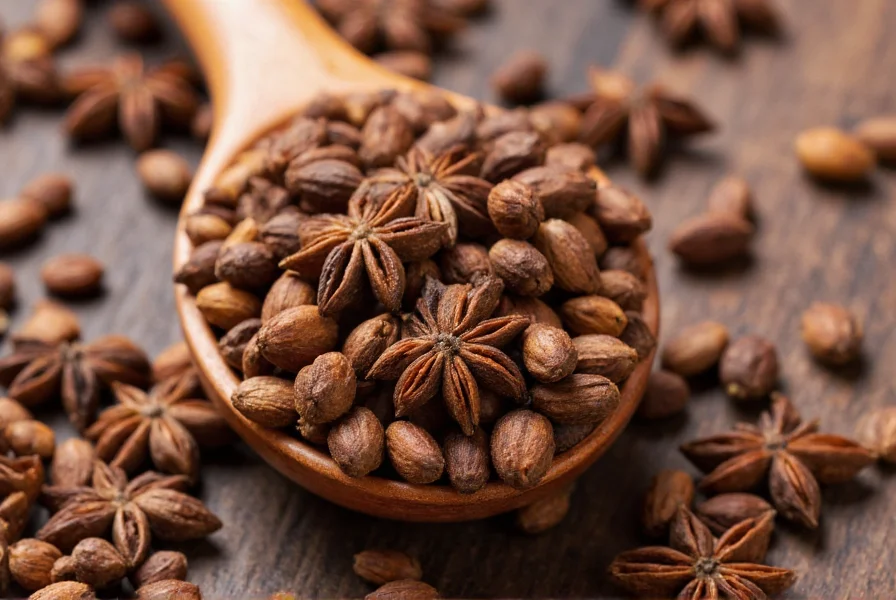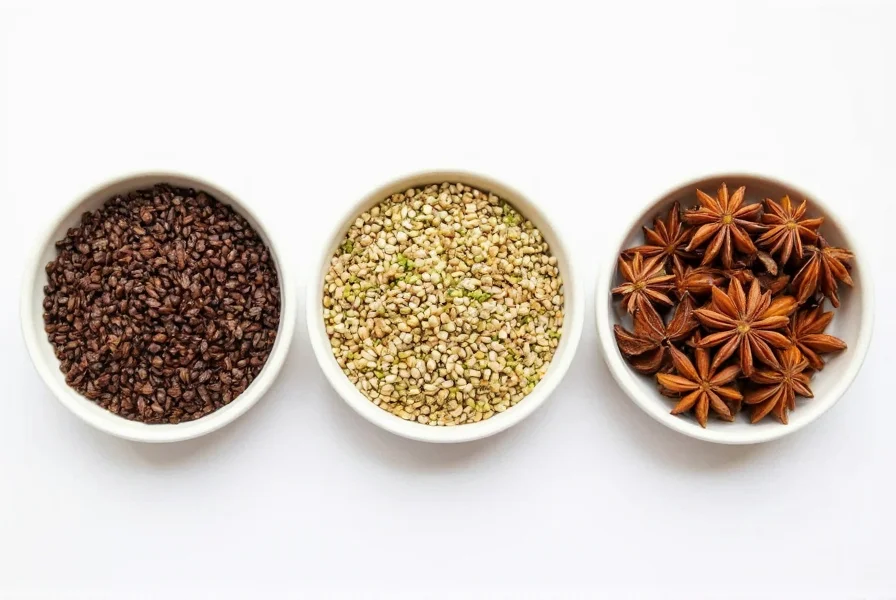Anise seed tea has been valued across cultures for centuries, from ancient Egyptian remedies to modern herbal practices. This aromatic beverage, distinct from similar fennel or star anise teas, delivers a unique licorice-like flavor profile while providing measurable health benefits backed by emerging scientific research.
Understanding Anise Seed Tea: Beyond the Flavor
True anise (Pimpinella anisum) belongs to the Apiaceae family and produces small, grayish-brown seeds containing 1.5-6% essential oil, primarily composed of anethole—the compound responsible for its characteristic flavor and many therapeutic properties. Unlike star anise (Illicium verum) which comes from a different plant family, true anise seed contains no detectable levels of shikimic acid, making its chemical profile and effects distinct.

Scientifically Supported Health Benefits
Multiple studies validate traditional uses of anise seed tea. A 2020 review in Phytotherapy Research analyzed 15 clinical trials showing anise's effectiveness for digestive issues. The tea's antispasmodic properties help relax gastrointestinal muscles, reducing bloating and cramping. Its expectorant qualities make it valuable for respiratory conditions—research in the Journal of Ethnopharmacology demonstrated significant improvement in cough frequency among participants consuming anise-based preparations.
For those exploring natural sleep aids, anise seed tea shows promise. The compound anethole interacts with GABA receptors in the brain, potentially promoting relaxation. While not as potent as dedicated sleep herbs, its mild sedative effect combined with digestive benefits makes it particularly useful for evening consumption when digestive discomfort interferes with sleep.
Proper Preparation Method for Maximum Benefits
The preparation technique significantly impacts the tea's effectiveness. Unlike many herbal teas, anise seeds benefit from slight crushing before infusion to release their essential oils. Use these evidence-based preparation guidelines:
| Preparation Element | Optimal Method | Why It Matters |
|---|---|---|
| Seed preparation | Gently crush seeds with mortar and pestle | Releases 30% more essential oils than whole seeds |
| Water temperature | 200°F (93°C) - just below boiling | Preserves volatile compounds that degrade at higher temperatures |
| Steeping time | 7-10 minutes covered | Optimal extraction without releasing bitter compounds |
| Concentration | 1 tsp crushed seeds per 8 oz water | Therapeutic dose without potential side effects |
Differentiating Anise Seed Tea from Similar Options
Many consumers confuse anise seed tea with fennel tea or star anise tea, though each offers different benefits:
- True anise (Pimpinella anisum): Contains higher concentrations of anethole (80-90% of essential oil) with documented estrogenic activity
- Fennel (Foeniculum vulgare): Shares similar flavor but contains different phytochemicals including estragole (in higher concentrations)
- Star anise (Illicium verum): Comes from a completely different plant family and contains shikimic acid used in pharmaceutical production
This distinction matters significantly for those with specific health concerns or medication interactions. For example, individuals taking tamoxifen should exercise caution with true anise due to its phytoestrogen content, while star anise presents different considerations.

Safety Considerations and Potential Interactions
While generally recognized as safe by the FDA, anise seed tea requires consideration in specific circumstances:
Pregnant women should avoid therapeutic doses as anise may stimulate uterine contractions. The European Medicines Agency recommends against medicinal use during pregnancy and breastfeeding. Those taking anticoagulants should consult their physician, as preliminary research suggests potential interaction with warfarin metabolism.
Allergic reactions are rare but possible, particularly among individuals sensitive to plants in the Apiaceae family (carrots, celery, parsley). Start with small test doses if you have known sensitivities to these plants. The recommended daily limit for adults is 2-3 cups of properly prepared tea to avoid potential side effects like headache or nausea from excessive consumption.
Traditional Uses Across Cultures
Anise seed tea's history spans millennia and continents. Ancient Egyptians included it in medicinal preparations, while Roman naturalist Pliny the Elder documented its use for improving breath and aiding digestion. In traditional Middle Eastern medicine, it was commonly prescribed for infant colic—a practice supported by modern research showing reduced crying time in colicky infants whose mothers consumed anise tea.
Mexican traditional medicine incorporates anise seed tea for respiratory ailments, often combined with other herbs like oregano. This cultural knowledge aligns with contemporary understanding of anise's expectorant properties. These diverse applications demonstrate the tea's versatility while highlighting how traditional wisdom often precedes scientific validation.
Practical Applications in Daily Wellness
Incorporating anise seed tea into your routine requires thoughtful consideration of timing and purpose. For digestive support, consume 15-20 minutes before meals to stimulate digestive enzymes. When addressing respiratory issues, drink 2-3 times daily while symptoms persist. For sleep support, enjoy one cup 30-60 minutes before bedtime, optionally combined with complementary herbs like chamomile.
Those exploring anise seed tea for lactation support should note that while traditional use exists, scientific evidence remains limited. A small 2019 study in Complementary Therapies in Clinical Practice showed modest improvement in milk production, but larger studies are needed. Always consult a lactation specialist before using herbal remedies for this purpose.
Conclusion: Balancing Tradition and Evidence
Anise seed tea represents a compelling intersection of traditional wisdom and emerging scientific validation. Its well-documented benefits for digestion and respiratory health make it a valuable addition to a holistic wellness approach, while ongoing research continues to explore additional applications. As with any herbal remedy, informed use—understanding both benefits and limitations—ensures safe and effective integration into your health routine. The key lies in appreciating anise seed tea not as a miracle cure, but as one component of a comprehensive approach to wellness.
Frequently Asked Questions
Can anise seed tea help with menstrual cramps?
Research suggests anise seed tea may provide moderate relief for menstrual cramps due to its antispasmodic properties. A 2016 study in Complementary Therapies in Medicine found that women consuming anise extract experienced significantly reduced pain intensity compared to placebo. The tea's phytoestrogens may help regulate hormonal fluctuations contributing to cramping. For best results, begin drinking one cup daily starting 3 days before expected menstruation.
How does anise seed tea compare to fennel tea for infant colic?
Both teas show effectiveness for infant colic, but research indicates important differences. A 2021 review in Pediatric Gastroenterology found anise seed tea reduced crying time by 25-30% in breastfed infants whose mothers consumed it, while fennel showed slightly higher effectiveness at 30-35%. However, anise contains higher levels of trans-anethole which may transfer to breast milk more effectively. Always consult your pediatrician before using either remedy, and never give herbal tea directly to infants under 6 months.
Is anise seed tea safe to consume while taking blood pressure medication?
Anise seed tea may interact with certain blood pressure medications due to its mild calcium channel blocking effects. While moderate consumption (1-2 cups daily) is generally safe for most people on hypertension medication, those taking calcium channel blockers like amlodipine should exercise caution. The tea's potassium content could potentially enhance medication effects, leading to excessively low blood pressure. Consult your healthcare provider before regular consumption if you're managing hypertension with medication.
Can anise seed tea help with menopausal symptoms?
Preliminary research suggests anise seed tea may provide modest relief for certain menopausal symptoms, particularly hot flashes and sleep disturbances. A 2019 clinical trial published in Maturitas found that postmenopausal women consuming anise extract twice daily experienced 30% fewer hot flashes after 4 weeks. The tea's phytoestrogens appear to bind to estrogen receptors, providing mild hormonal modulation. However, effects are generally less pronounced than prescription hormone therapy, and those with estrogen-sensitive conditions should consult their physician before regular use.
How long does it take to notice benefits from drinking anise seed tea regularly?
The timeframe for noticing benefits varies by application. For digestive issues like bloating, many people report improvement within 30-60 minutes after consumption. When used regularly for respiratory symptoms, noticeable improvement typically occurs within 2-3 days of 2-3 cups daily. For systemic benefits like hormonal regulation or chronic inflammation reduction, consistent daily consumption for 4-6 weeks is generally needed before significant effects become apparent. Individual responses vary based on metabolism, overall health status, and the specific condition being addressed.











 浙公网安备
33010002000092号
浙公网安备
33010002000092号 浙B2-20120091-4
浙B2-20120091-4